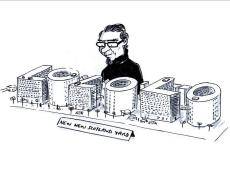February 20, 2015
Job automation seen as a key digital challenge in new policy report
Whichever party or coalition forms the next UK Government will face a raft of serious challenges with the emerging digital economy, including making plans for the automation of up to a third of existing jobs. That is the main conclusion of a new report published this week by The House of Lords. Make or Break: The UK’s Digital Future, argues that the next 20 years will present the UK with a range of profound challenges and opportunities and it is incumbent on the Government to address them at the earliest opportunity. As well as imminent and well known issues such as the need to roll out ultrafast broadband countrywide and the development of skills and digital clusters, the report also highlights the particular issue of what to do about the claim that up to 35 percent of jobs over the next two decades will be automated.

























December 12, 2014
Can the workplace environment change an organisation’s culture?
by Adam Burtt-Jones • Comment, Workplace design
(more…)